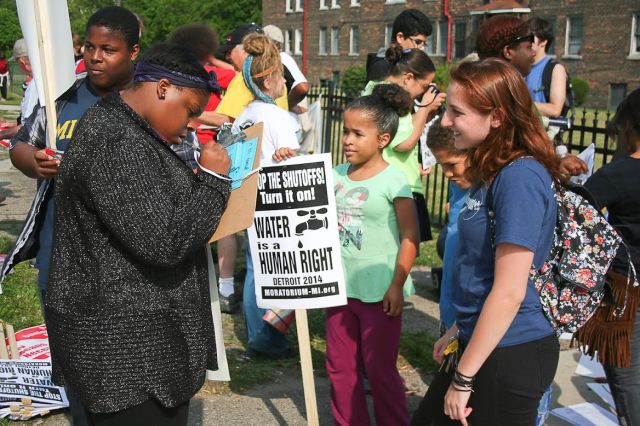BTN.com staff, September 15, 2014
At various times throughout its history, Detroit has been a symbol of larger social trends playing out regionally and nationally. In the early 20th century, it represented the mobile masses seeking a better life, adding to its assembly lines hundreds of thousands of workers from places ranging from Eastern Europe to the American South. In the 1940s and 1950s, it was emblematic of a comfortable and secure middle-class life for the working man.
More recently, Detroit has alternately epitomized urban decay and renewal. There?s no shortage of bad news: a municipal bankruptcy, a mayoral scandal and city services being reduced (or eliminated altogether) have grabbed headlines over the past few years.
On the other hand, there are plenty of people and organizations working hard to turn Motown around. They may not capture front-page headlines, but their efforts positively impact the lives of many. One example of this is Meredith Burke, a University of Michigan student who served this summer with the Neighborhood Service Organization (NSO), which helps the chronically homeless population of Detroit.

Burke was part of a group of University of Michigan students who worked with non-profits via the school?s partnership with the Detroit Community Based Research Program (CBRP). Originally targeting all of southeastern Michigan, CBRP has focused on the greater Detroit region since 2013. The program assigns participating college students to various non-profit and low-profit community organizations throughout the metro Detroit area. The idea is to help organizations that are trying to revitalize the city, along with young people who seek a practical understanding of how community service works.
?After I was interviewed and accepted into the Detroit Community Based Research Program, I was asked to rate about six organizations in Detroit that I would like to work for during the summer,? Burke explained. ?Based off my selections as well as interview responses, I was placed with NSO.
?I could not have asked for a better placement,? she added. ?There was never a dull moment!?
Over the past few months, Burke was part of NSO?s Homeless Recovery Services Unit, within the organization?s supportive housing development program. Every day, she worked in Detroit?s historic Bell Building, a former commercial warehouse that currently accommodates more than 150 homeless people in temporary apartment housing. Her duties included having conversations with building residents, meeting with NSO management and staff, observing various urban farming programs in Detroit for the Bell Building?s own gardening and landscaping efforts, and putting on recycled arts-and-crafts events.
Undergraduates chosen for the CBRP program have a variety of academic backgrounds. Majors include pre-med, public policy and social justice, said Jenna Steiner, program director for CBRP.
The students submit service projects after listening to the needs of the organization they?ll be working with. Once assigned, they provide at least 35 hours a week of service, which can include everything from back-office administrative work to engaging with members of the community out in the field. They also attend weekly seminars on topics such as local research, community interaction and social entrepreneurship.
The program is always looking for ways to grow, Steiner said, but at the moment it can handle only 20 students per session. While they occasionally place more than one participant at a community organization, demand is such that most only receive one student.
Through this program, University of Michigan undergraduates absorb the realities of working for a non-profit organization. They also learn how to enter a community and start a dialogue. Emphasis is placed on listening to the needs of the residents and groups being helped.
But the most important thing Burke learned was the role love plays in serving others.
?Most of the time, what this world needs isn't more money, but more love,? she said. ?Love is responsible for the renewed spirits and spark of life at the Bell Building. It is love that turned society's ?outcasts? into dignified human beings. Showing sincere compassion is the first step in helping people who are experiencing homelessness or people who experienced homelessness. From compassion comes trust, and from trust comes relationships.?
By John Tolley








